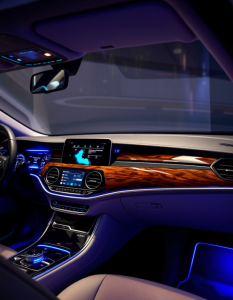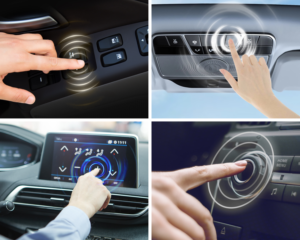In the realm of technology, our senses play a crucial role in enhancing our experiences. While sight and sound have long dominated our digital interactions, the sense of touch, often overlooked, is now stepping into the spotlight with the advancement of haptic feedback technology. From mobile devices to gaming consoles, wearables to healthcare devices, and even automotive applications, haptic feedback is revolutionizing user experiences across various domains.
Mobile Devices Applications:
In the realm of mobile devices, haptic feedback has become ubiquitous, enriching interactions through subtle vibrations and tactile responses. From the satisfying click of a virtual keyboard to the gentle buzz of notifications, haptic feedback adds a layer of immersion that enhances user engagement and responsiveness.
Gaming and Electronic Applications:
In the gaming world, haptic feedback takes center stage, providing players with a more immersive and realistic experience. Vibrating controllers simulate the recoil of a gun or the rumble of a racing car, transporting players into the heart of the action. Furthermore, virtual reality (VR) systems leverage haptic feedback to enhance immersion, allowing users to feel the texture of virtual objects and terrain.
Wearable Devices Applications:
Wearable devices, such as smartwatches and fitness trackers, utilize haptic feedback to deliver discreet notifications and alerts. Whether it’s a gentle tap on the wrist to remind you to stand up or a pulsating vibration to indicate an incoming call, haptic feedback ensures that users stay connected without the need to constantly check their devices.
Healthcare Applications:
In the realm of healthcare, haptic feedback technology is transforming patient care and medical training. Surgical simulators equipped with haptic feedback allow aspiring surgeons to practice procedures with realistic tactile sensations, enhancing their skills and reducing the risk of errors. Additionally, prosthetic limbs equipped with haptic feedback provide users with a sense of touch, restoring a crucial aspect of their sensory experience.
Automotive Applications:
In the automotive industry, haptic feedback technology is revolutionizing the driving experience, enhancing safety and comfort. From tactile feedback in steering wheels to alert drivers of lane departures to vibrating seat cushions that warn of potential collisions, haptic feedback systems help drivers stay focused and informed on the road.
Haptic feedback technology is transforming the way we interact with digital devices and systems across various domains. Whether it’s adding realism to gaming experiences, improving user interfaces on mobile devices, or enhancing safety in automotive applications, the applications of haptic feedback are vast and promising. As technology continues to evolve, we can expect haptic feedback to play an increasingly integral role in shaping our digital experiences.







